
 |
Page 2 |
| This adit is one level above the main adit. | 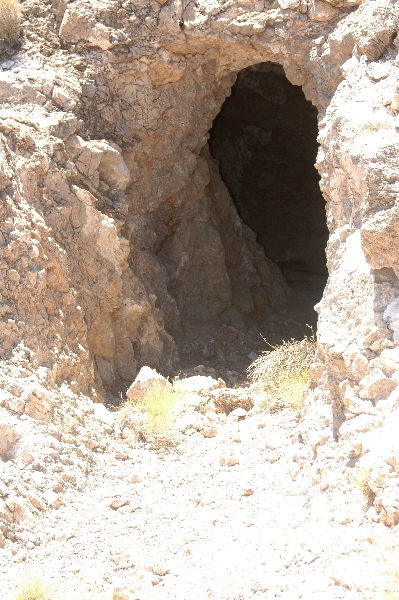 |
| Some of the mine track still remains. The more difficult a location is to reach, the more likely you are to find relics. Easy to reach mines are picked clean. | 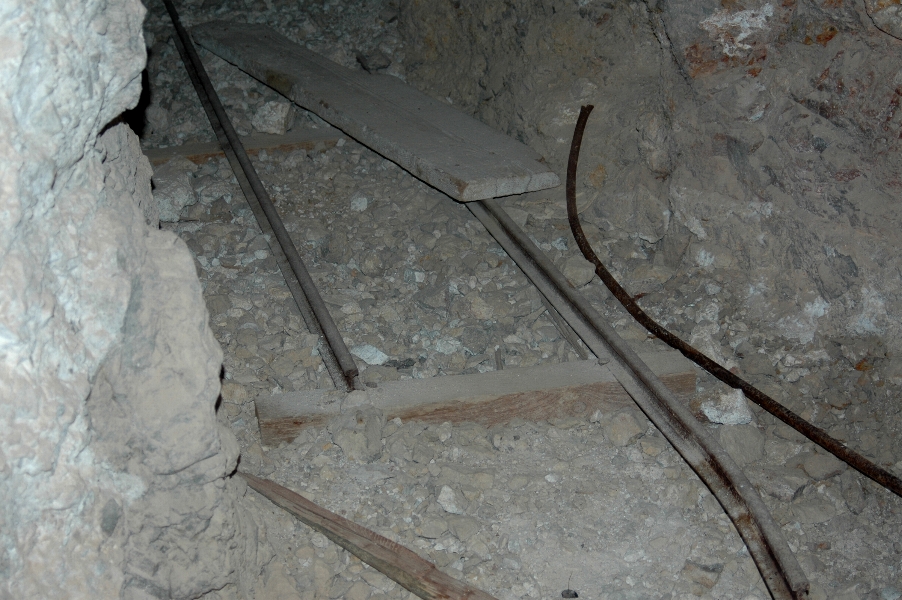 |
| This tube sits right next to an ore chute. I'm not sure what it is for. I'm wondering if it was for ventilation? Maybe dropping ore samples down out of the stope for analysis? | 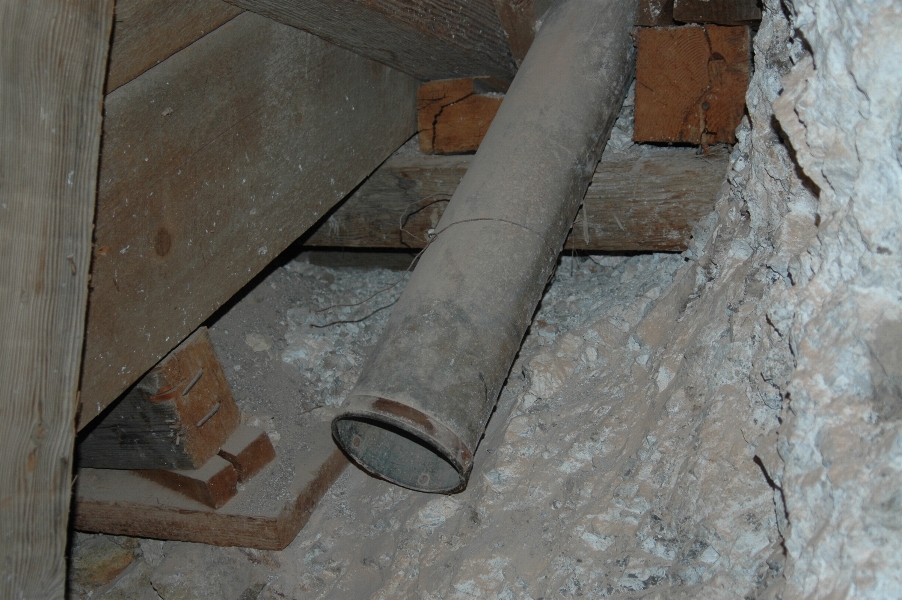 |
| This "glory hole" may have resulted from a collapsed stope or was intentionally created to gain access to further workings. Without ropes or ladders, there's no accessing this area. | 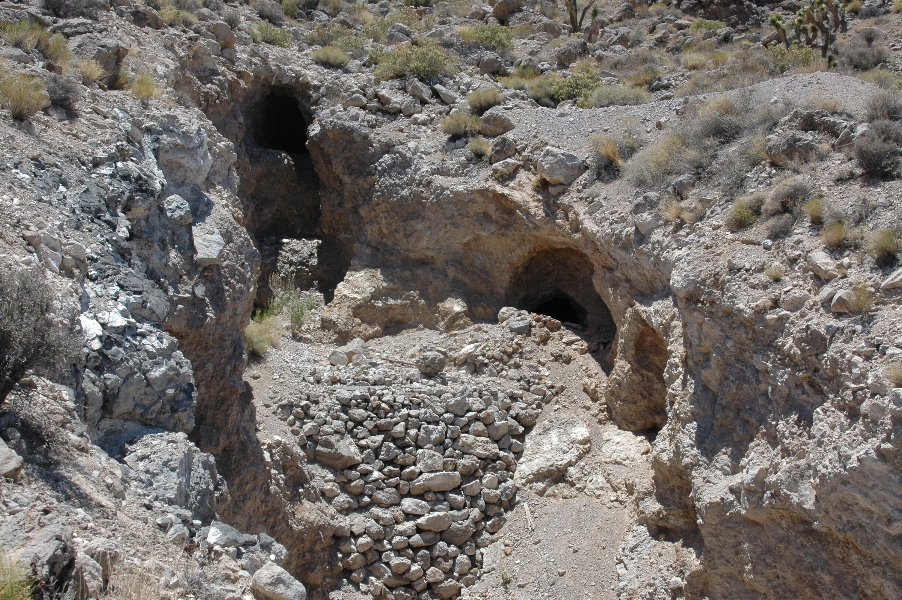 |
| At the highest mine level is this ore chute. It's approximately 30 feet across and drops down almost 100 feet to the level below. The sides are extremely steep and a single misstep would be a disaster. | 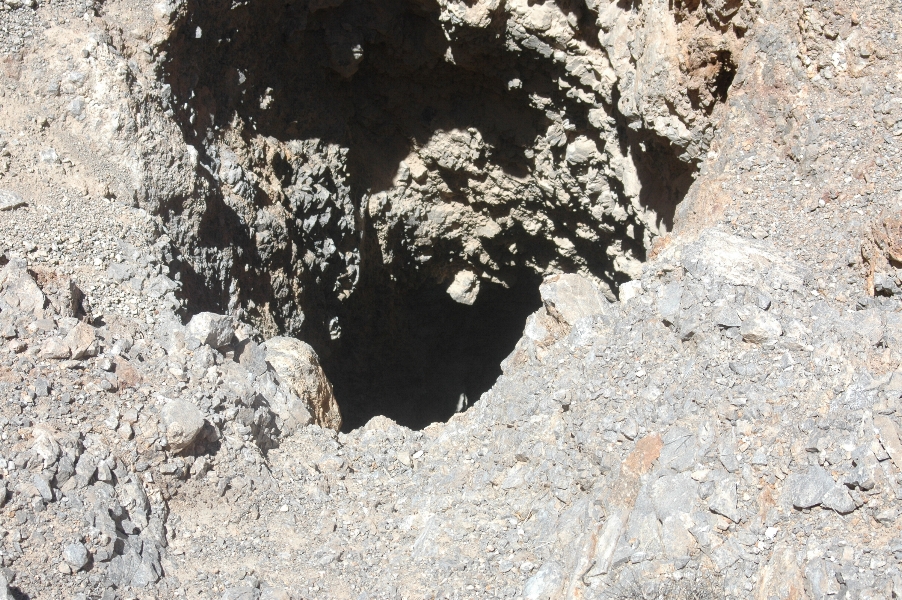 |
| This tunnel leads into a "glory hole" that has multiple drifts leading into the mountain side. | 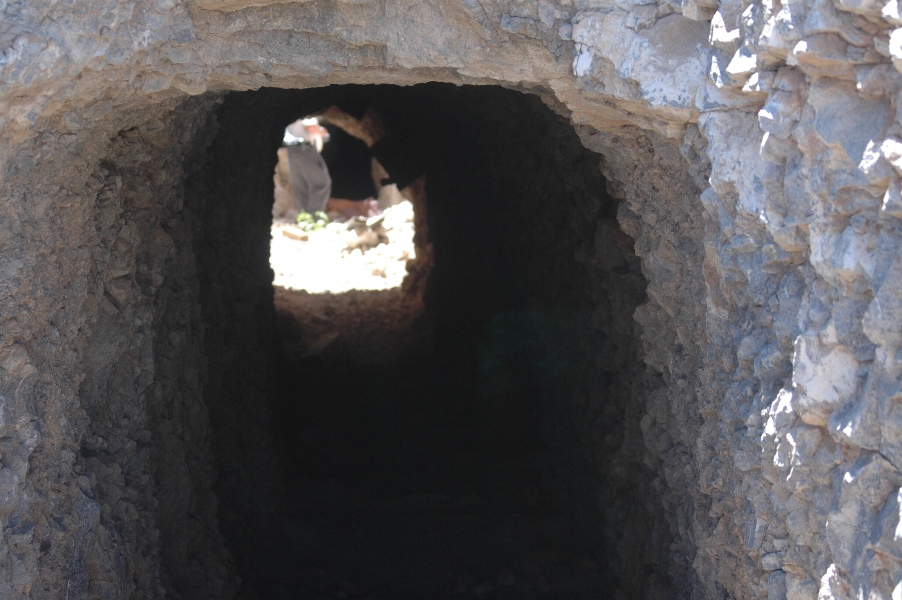 |
| At the far end of the tunnel is this ore chute. Mining lore says that for each load of ore that was dumped down a chute, the miner would use his carbide lamp to make a dot. It was a crude accounting system but appears to have been widely used in this mining district. | 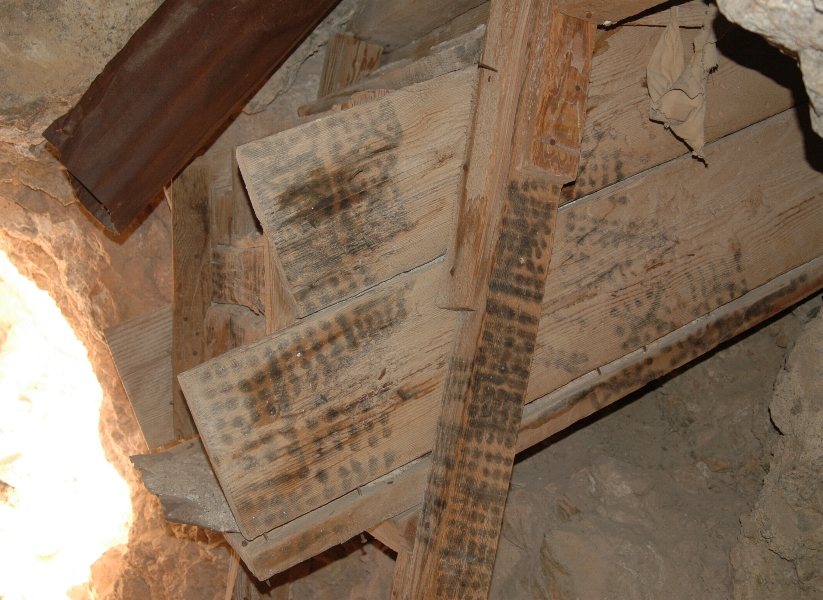 |
| Just across from the chute is this "grizzly" above a shaft that leads to a lower level. This is another example of miners using gravity to move ore whenever possible. The grizzly was used to keep large rocks from clogging the shaft. | 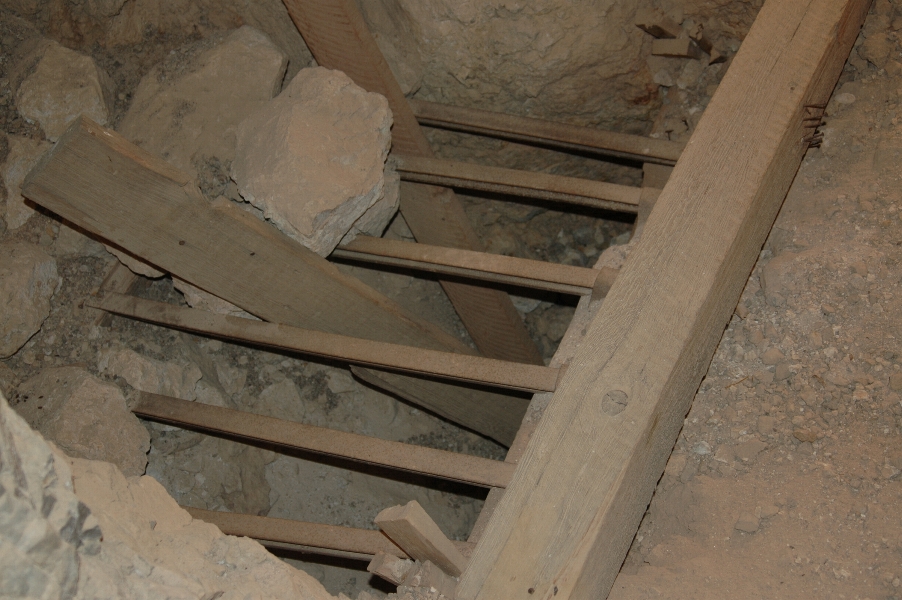 |
| This makeshift chute moved ore from an upper level. | 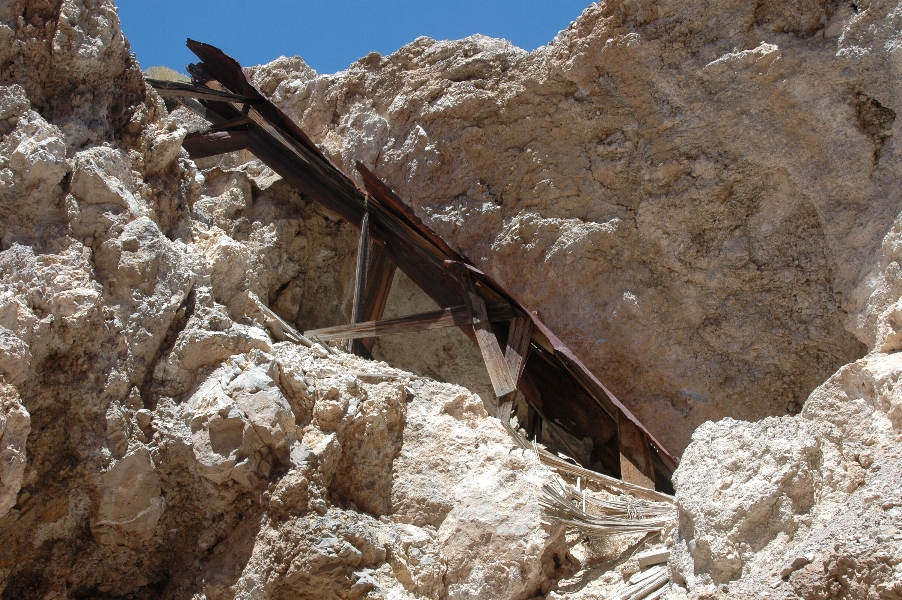 |
| I always love it when there are artifacts to be found. It gives me
a feel for what life was like for the miners. The coffee can has wire strung across the top to make a simple bucket. Maybe a lunch box? |
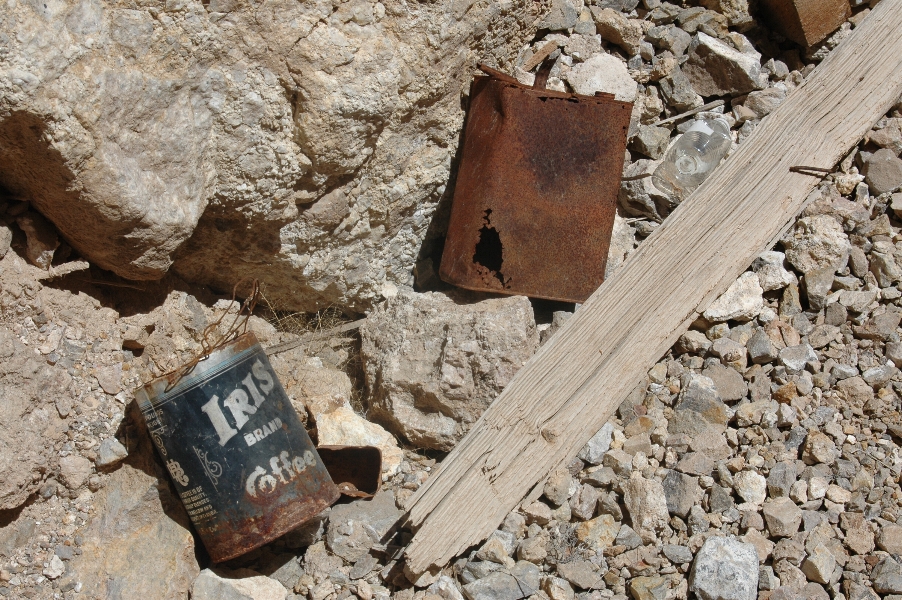 |
| This adit sits well away from the main mine adits but you can just make out a horizontal line that is the path to the adit. | 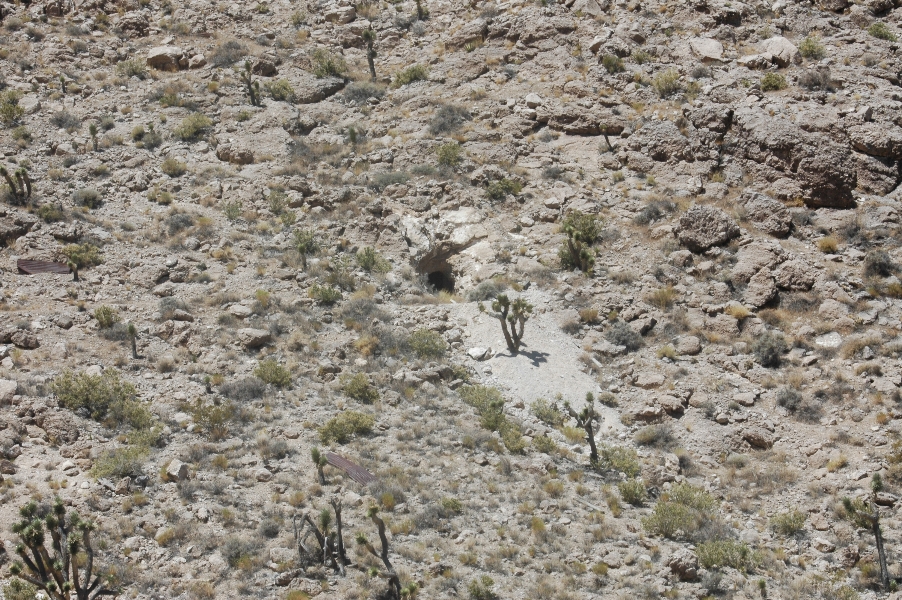 |
| The adit had a door and only goes a few feet back into the mountain. It may have been used to store explosives or other items that the miners needed to store and keep cool. | 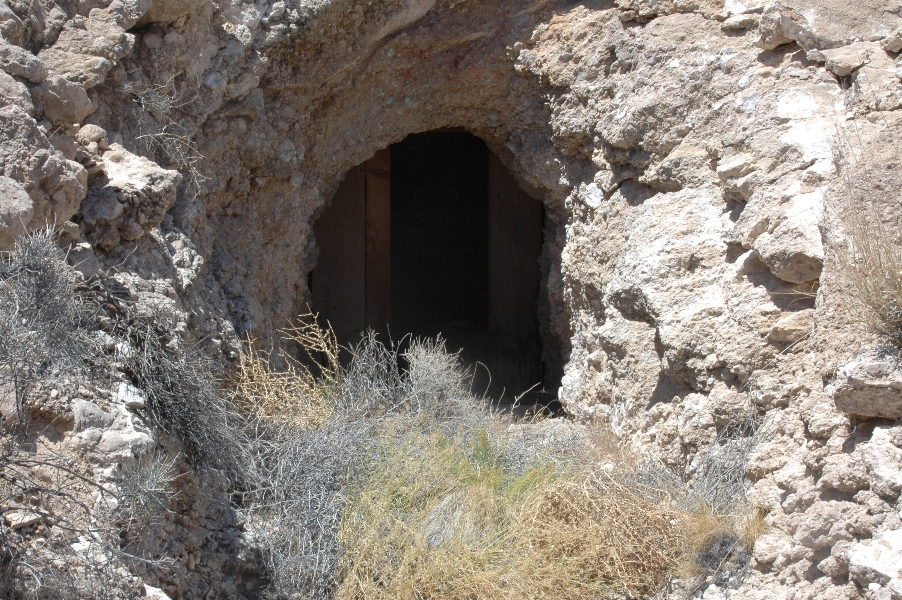 |
| During the early years of production at the Sultan, refrigeration
was not available to keep fresh food from spoiling. Canned food was the only
alternative as is evidenced by these empty cans. Who know whether the miners during WWII had it any better... |
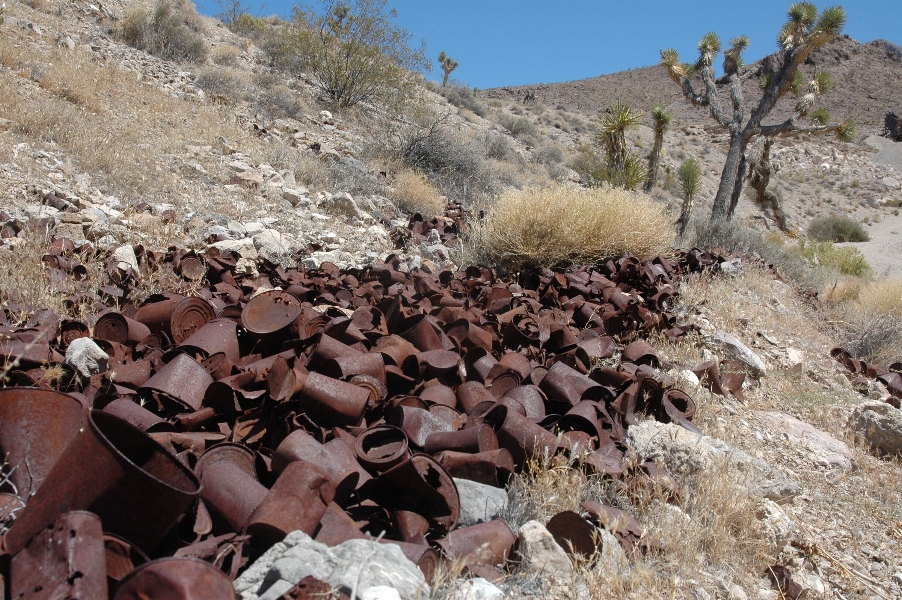 |
| At the top of this hill is an old building foundation, quite possibly the camp kitchen. Empty cans were thrown down the side of the hill. Over time rain, wind, and gravity have caused them to collect at the bottom of the hill. | 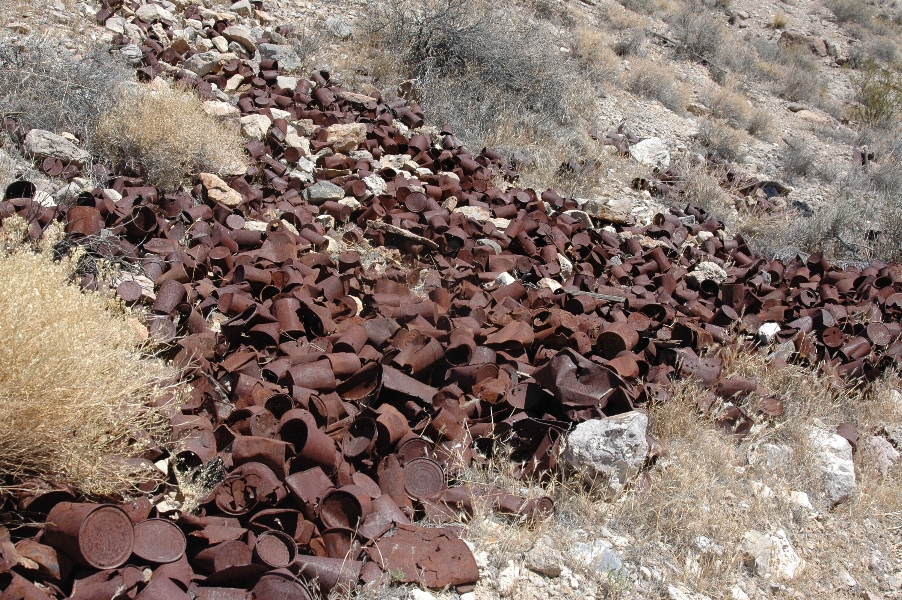 |
| Cookie didn't waste time with a can opener! Time is slowly erasing these traces of man's activity. |
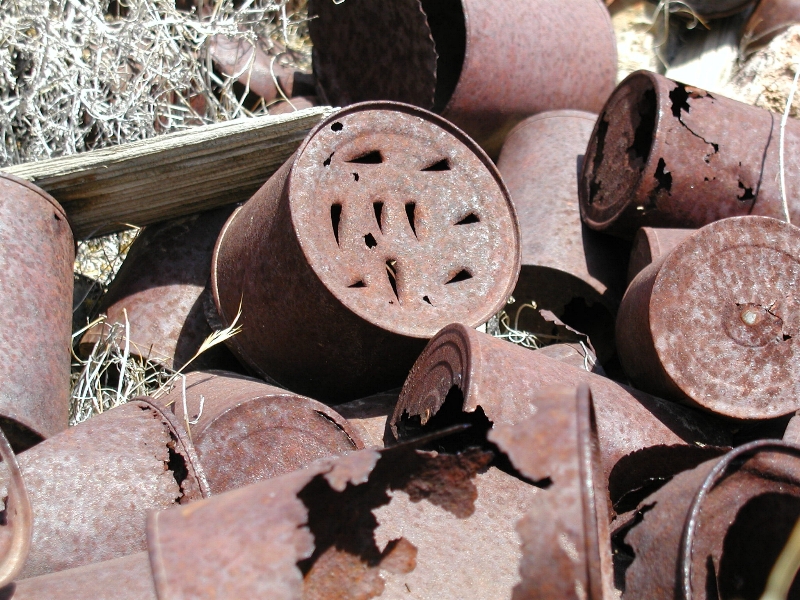 |
| The remnants of an asphalt road leading up to the building foundations. This road was most likely paved during the WWII phase of production. | 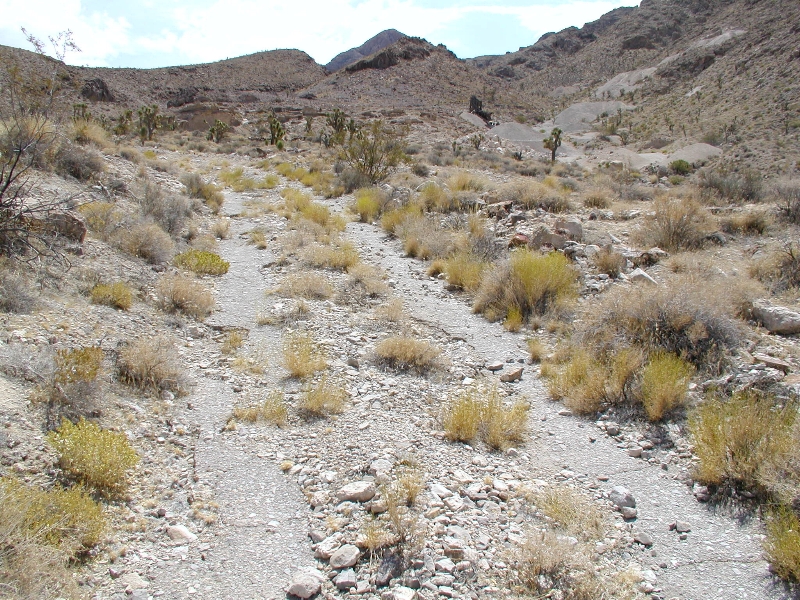 |
| This is the side rail of a set of steps. A broken clay pipe can be seen in the upper left. | 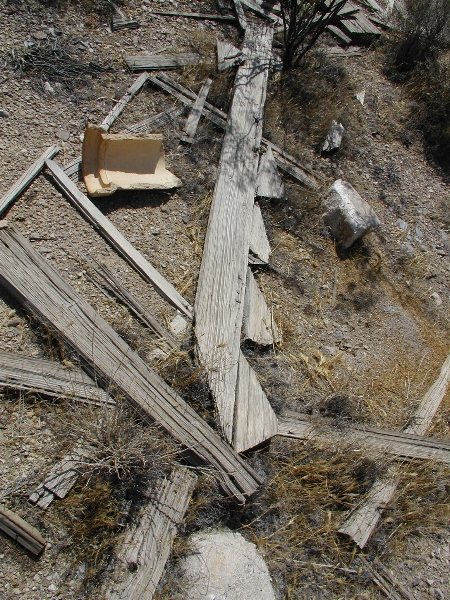 |
| There are the remains of two building foundations on this small level spot. One foundation was most likely the cook house. Was this the bunk house? | 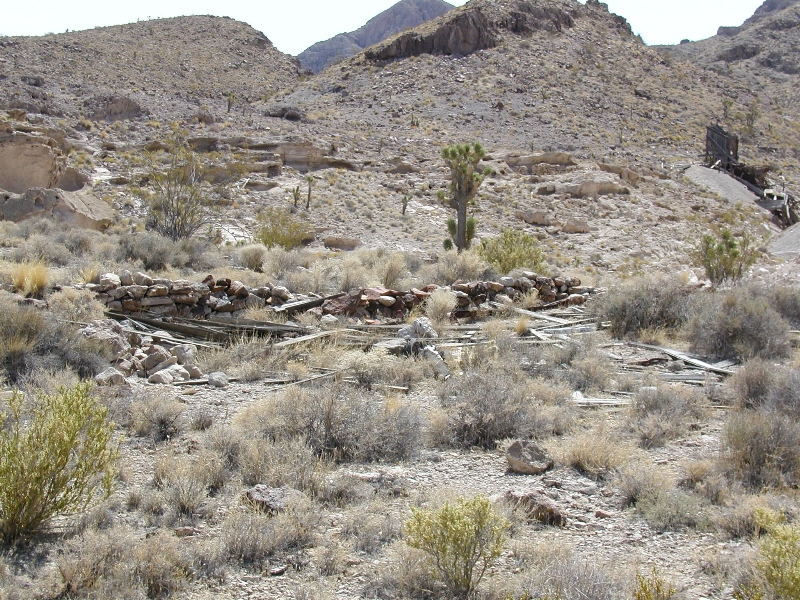 |
| The sole of a hand-nailed shoe. If you look carefully you can see where it has been re-soled a second time. | 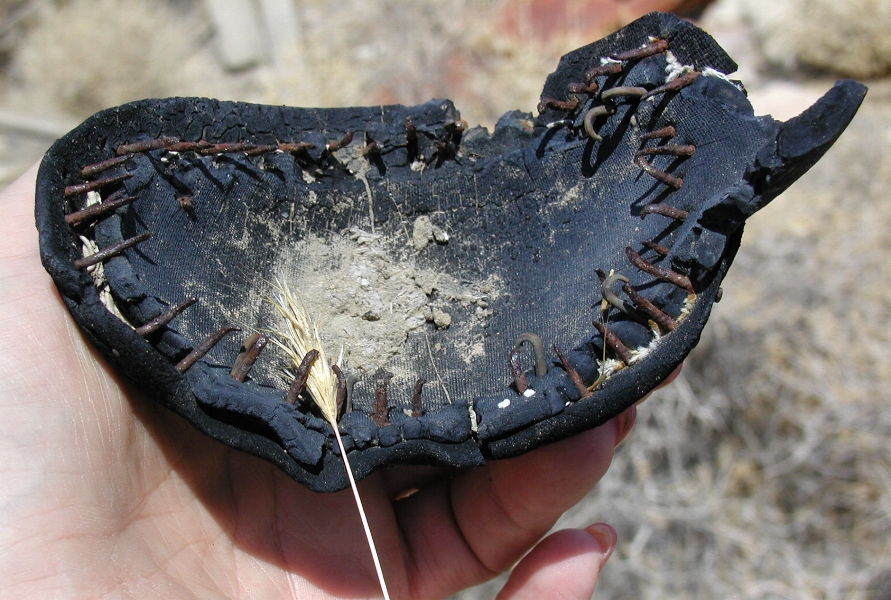 |
| This is a small buckle that I found on the ground. Too small for a belt buckle, was it on a shoe or piece of luggage? | 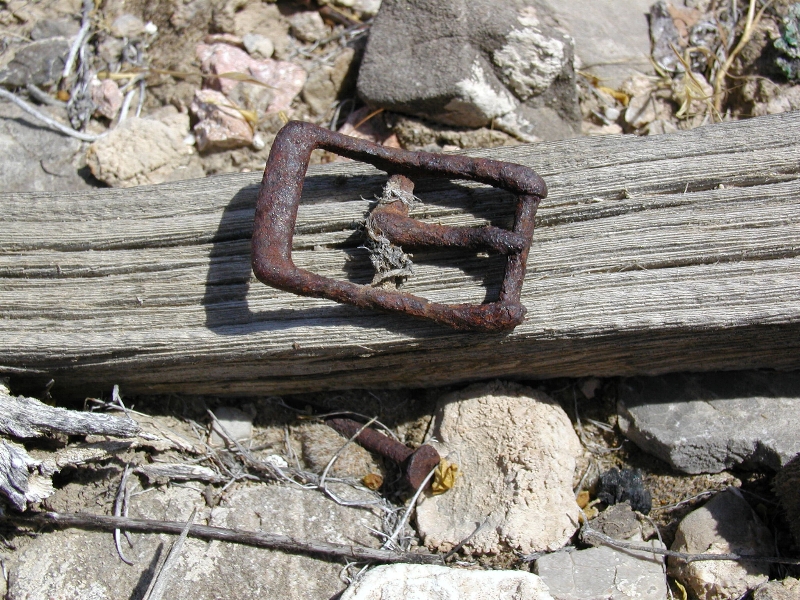 |
| More evidence of a cook house. A miner may have eaten soup out of this bowl. | 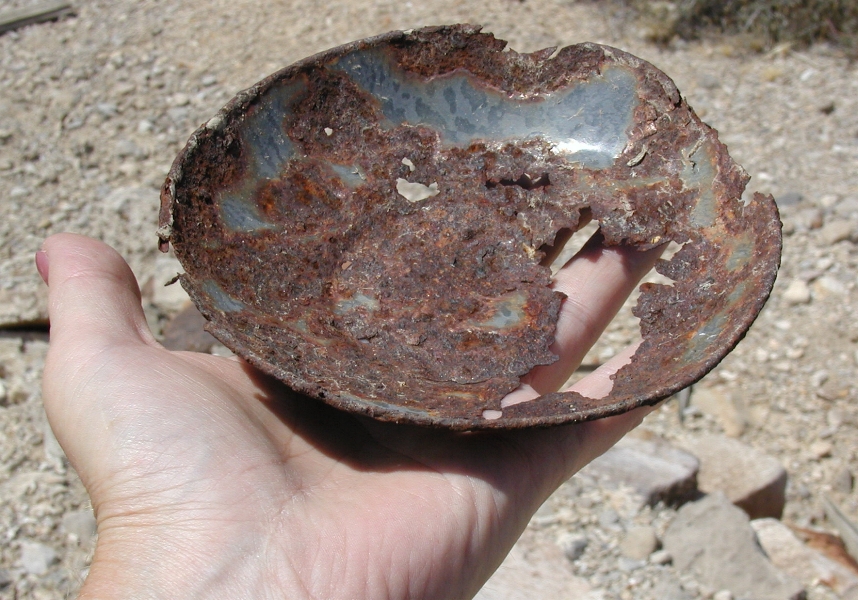 |
| These pieces, along with others in the vicinity, appear to have been from the cook stove. |  |
| And just when I thought the Sultan was getting a bit boring, an
friend asked, "Have you seen the inclined shaft on the other side of the
bridge?" I can't believe what we found next! |
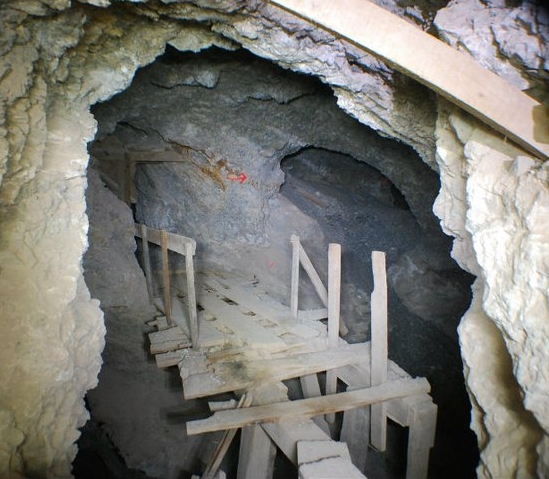 |